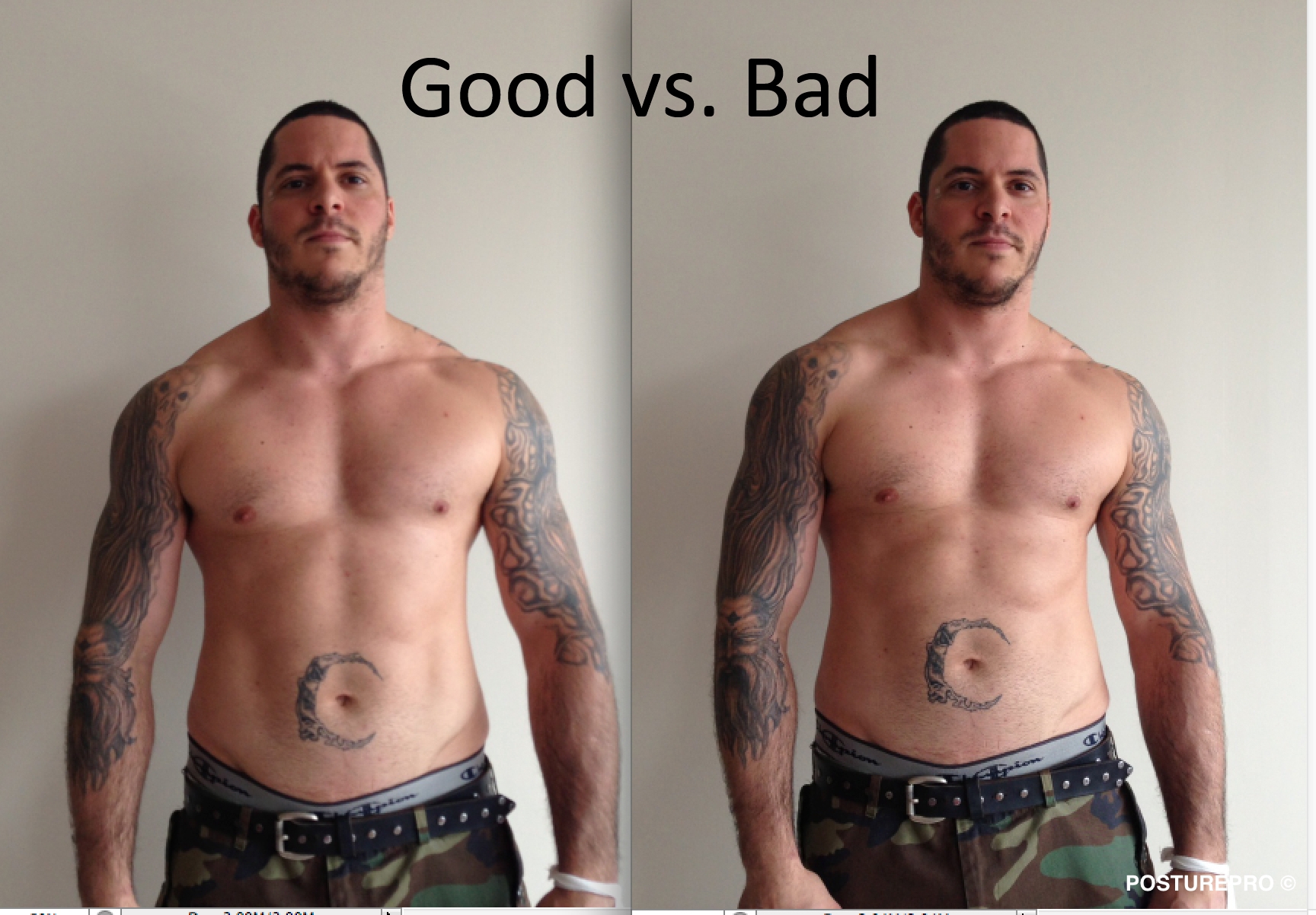If one of your top ten New Year’s resolution for 2018 is to get in shape, that might be a great decision.

New Year’s Eve has always been a time for looking back to the past, and more importantly, forward to the coming year. It’s a time to reflect on the changes we want (or need) to make, and the resolutions to follow through on those changes. So if one of your resolution’s this year is to hit the gym hard, you might want to think about this. Did you know that starting a training program with a body that is misaligned can actually increase your stress hormones, make it harder for you to lose weight and get in shape, affect your motivation and increase your potential risks of injury. Let’s take a closer look.
Good Posture vs Poor Posture

To define poor posture, we need to define what good posture is. Good posture could be characterized by having our spine perfectly aligned. This is essential to withstand the pull of gravity, which affects our energy expenditure, hormone production, and homeostasis. Your spine has natural curves that form an S-shape. Viewed from the side, the cervical and lumbar spines have a lordotic, or a slight inward curve, and the thoracic spine has a kyphotic, or gentle outward curve. The spine’s curves work like a coiled spring to absorb shock, maintain balance, and to facilitate the full range of motion throughout the spinal column.

These curves are maintained by two muscle groups, flexors and extensors. What we tend to forget is that the tension of these muscle groups are under the dependence of our brain output. Simply put, in order to move, your brain needs precise information from your body parts like your feet and your eyes. Both of these forms of sensory input make it to parts of your brain, which then, send this input to motor cortex which is part of the frontal lobe. The motor cortex is then responsible for stabilizing your joints (premotor cortex) before you move (motor cortex). As such, our posture, is the reflection of how well your brain parts are communicating together. If the information going into your brain is faulty or uneven (left feet/right feet or left eye/right eye), then the output will also be compromised. Over time, these postural adaptations wear out every joint in the body unevenly and cause chronic pain.
Poor posture then, could be defined as a defect in the processing of the sensory information coming from one or more of the sensory systems (muscles, joints, skin), causing the body to adapt to the faulty information it’s receiving. Poor posture is the culprit behind a variety of conditions including, ankle, knee, shoulder, hip, back pain, cervical pain, and headaches.
If you posture is misaligned, then your body could be in a state of chronic inflammation. The body starts producing more cortisol in response to stress. At the same time, it reduces testosterone production, dedicating energy to the production of cortisol so that enough will be available. Under normal circumstances, after a brief burst of stress, people return to a more normal state. Both cortisol levels and testosterone levels readjust because the stressor is gone.
In the case of poor posture this cannot happen optimally. The subconscious part of our brain (basal ganglia, brainstem, cerebellum) dictates posture by taking in information from sensory receptors of the body (feet and eyes). Both provide kinesthetic (sensation) information about the body’s position in space (proprioception).
An aligned posture has many benefits. Social psychologist and Associate Professor at Harvard Business School, Amy Cuddy, shared some of the research findings behind posture and hormonal changes in a TED Talk in June 2012. Her research demonstrated that even if we do not feel confident, when we alter our posture, by placing ourselves in a “power pose,” our hormones begin to shift within us.
Changes in posture resulted in hormonal changes among the participants. The participants with a “power posture” experienced about a 20-percent increase in testosterone, while those that took on a “defeated posture” had about a 10-percent decrease in testosterone after maintaining their posture for two minutes. The stress hormone cortisol also demonstrated changes when the posture was altered to “power” and “defeated” positions. The “power posture” people experienced about a 25-percent decrease in cortisol production, while the “defeated posture” participants experienced a 15-percent increase in cortisol.
Cortisol is released in times of stress, injury, and poor posture situations. Increased cortisol will lead to weight gain, hormonal imbalance, fatigue, poor sleep, impaired healing, and a wide variety of other symptoms.
The Journal of the American Medical Association’s article, Posture in the Aging and Aged Body – Freeman JT., JAMA 1957; 165(7), pp 843-846 JAMA, states “Deviations in the body’s center of gravity caused poor posture, which resulted in intestinal problems, hemorrhoids, varicose veins, osteoporosis, hip and foot deformities, poor health, decreased quality of life and a shortened life span.”
Improving our posture is more than creating a good outward appearance for other people.
Posture is a sign of health, and can affect quality of life and our life span. If your new year resolution is to get in shape, don’t neglect your brain and take control of your posture today, to change your health. Proper coaching and professional trainers can start you on the process for weight loss and increase muscle mass, but improving your posture prior to starting the training program can restore hormonal balance, increase self confidence, decrease aches and pains, and allow you to live longer.
Not Sure About our Courses?
Listen to the Posturology Podcast ↓
Welcome to our BLOG. We write about the real causes of injury and give you really great tips on how you can improve your posture and quality of life.
Learn more →
Montreal Program

Denver Program

England Program

New York Program



